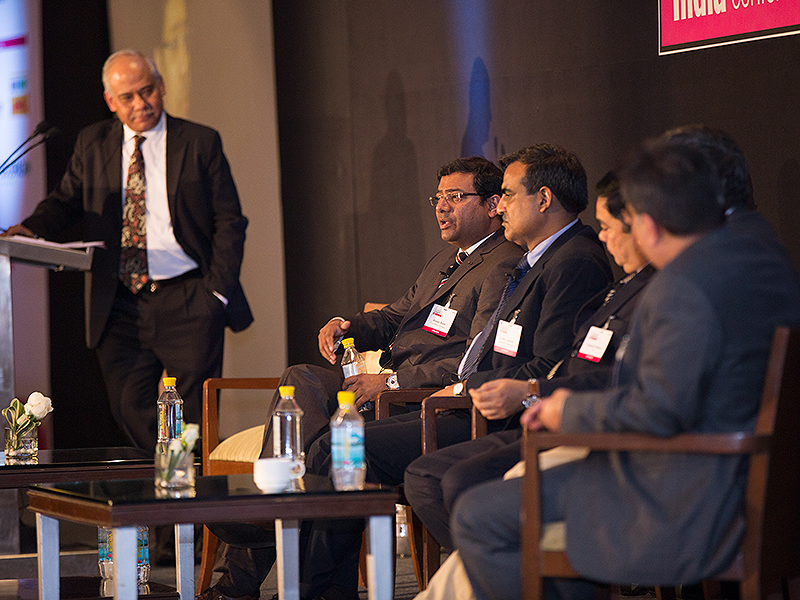
Rachael Hogg contributed to this report.
India is a culture full of symbols and colourful expressions, often with multiple and conflicting meanings. Its national flower, the lotus, commonly represents beauty and non-attachment; it grows in the mud yet smells of sweet perfume. The tiger, meanwhile, is a symbol of natural wealth and protection of the nation, but also of great power and even danger.
Such symbolism can extend to the country’s political and industrial landscape. It is perhaps no coincidence, for example, that the government has chosen to represent its ‘Make in India’ campaign – a programme intended to promote and encourage local manufacturing – with the logo of a lion made out of components. Like the tiger, it stands for both the wealth and prowess that could emerge in Indian manufacturing.
The automotive industry and supply chain are at the heart of the campaign, as it is India’s manufacturing base. Automotive already represents 7% of India’s GDP, and more than a quarter of manufacturing output, including 19m direct or indirect jobs. The government and the industry have ambitions to grow the vehicle and component output by multiples over the coming decade. In this way, automotive also represents a symbol of strength.
But perhaps, like the tiger or lion, it can be a danger if handled incorrectly. Weak sales and production have led capacity utilisation at many Indian vehicle and component plants to a dangerously low 60-70%, according to Vinnie Mehta, director general of the Automotive Component Manufacturers Association of India (ACMA). Foreign investment has dipped in the sector and across the economy, while technology, emission and safety standards are not as advanced as other regions. High interest rates have held back investment and sales. In the short term, a tepid sales recovery could be at risk as tax excise incentives were due to end in January.
In the three years that India’s automotive industry has seen stagnant or declining volume, its supply chain has also fallen back. India has a widening trade deficit in automotive parts, for example, particularly with China, said Mehta. Logistics providers have also struggled to maintain fleets and stay profitable, according to Sushil Rathi, vice-president of Mahindra Logistics. More broadly, as India faces chronic infrastructure shortages, it has also seen drops in private and foreign investments in ports and roads.
Follow these links for other news stories and reports from the 2014 conference. Check back over the coming week as more stories are added:
Follow this link for video recordings of the main sessions from the event
- Indian logistics cost a disadvantage versus China
- Government to overhaul road safety bill and integrate multimodal planning
- Picking up speed on dedicated rail freight corridor
- Ford switches to LLP model for inbound and export logistics
- Time to get off the road
- GST may be on the way at last
Follows these links for other relevant India coverage:
Against this background, you might expect executives to be weary, even fed up with symbols and unmet promises. However, with Narendra Modi and his coalition government’s sweeping election victory in May, India is charged with slogans of hope for reform and growth. Modi’s campaign slogan, 'Acche din anne wale hain' (‘Good days are coming’), or just acche din, has become an Indian rallying call (as well as potential critical charge). That included executives at the 2014 Automotive Logistics India conference in Gurgaon.
“I believe fully that we are entering acche din in the automotive sector,” said Prem Verma, CEO of TML Distribution and responsible for outbound vehicle logistics for Tata Motors. “We are on the cusp of huge growth potential. There is a pending opportunity in the automotive industry and logistics per se. There are clear signs of green shoots.”
“The last 2-3 years were very uncertain. It was darkness, and now we see light,” said Jasjit Sethi, chief executive officer of TCI Supply Chain Solutions, one of India’s largest logistics providers. “We think 2015 will be a good year.”
“Acche din has to start with the leadership,” said Amlan Bose, vice-president of logistics and export operations for Asia Pacific Africa at Ford. “Last year at this time I said I wanted the vision of a leader, and now we are back with a leader [in Modi].”
Equally appropriate as another symbol for India, Bose and Verma used a cricket reference to describe the current situation: they described it as a ‘test match’, which is a long competition that can last up to five days, compared to shorter, ‘T20’ matches that last only a few hours.
“The prime minister has been sending a message of inclusiveness and long-term thinking. He talks of ten-year objectives, rather than the typical five that would cover the life of a government,” said Bose. “I think it a test match for government, for the industry and also at a citizen level, rather than a T20 match.”
Hopes deferred and wolves at the door
This optimism at the conference was palpable despite three consecutive years of stagnant or declining automotive volumes in India. After light vehicle production shot up from 2.4m units in 2009 to 3.8m units by 2012, the number has drifted to around 3.6m this year, according to Amit Kaushik, principal analyst for autos at IHS Automotive.
These falls came on top of negative (and painfully perennial) economic and infrastructure issues, including stubborn inflation and high interest rates. Manufacturers and distributors face patchy energy supply; a poorly paved and limited road network; a low use of railways to move freight; congested and overcrowded ports both for moving containers and vehicles; and a complex and opaque tax regime that leads to great disparities in services across India.
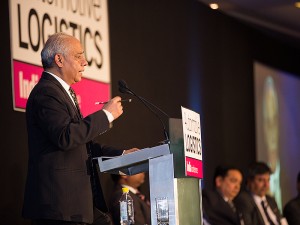
On the whole, logistics can be a competitive disadvantage for Indian carmakers, including for managing their inbound, outbound and international logistics. Nigel Harris, president and managing director of Ford India, revealed that the carmaker’s logistics costs were 30% more expensive relevant to those of China, for example, including long delays for importing parts and exporting vehicles.
A (much) bigger sector ahead
Executives are, however, holding out on the hope that the industry is on the verge of a strong comeback. There has recently been a small uptick in sales, which was stronger in the month of November, as passenger vehicles grew around 12% higher compared to the same month last year.
IHS’s Kaushik was relatively bullish on growth, with Indian GDP growth set to start outpacing that of China’s; he said it would average 7.67% per year between 2016-2021, compared to little more than 7% growth per year in China. For light vehicle sales, he predicted an 8% rise in 2015 compared to 2014, followed by a 13% increase in 2016. Growth would then remain around 10% per year, with light vehicle sales surpassing 6m units by 2020.
Kaushik also predicted that light vehicle exports, which are likely to reach 600,000 this year, should increase to around 900,000 by 2020. Another 80,000-100,000 commercial vehicles likely to be exported by then, for close to 1m vehicle exports.
The Indian industry is nothing if not ambitious. According to Rajiv Bajaj, a partner at consulting firm Nomura Research Institute and a veteran in the automotive component and supply chain sector, the government will soon unveil its ‘2026’ vision for the automotive sector. As well as being the third largest global vehicle market after China and the US by then, he revealed that this plan will include a goal of increasing revenue by nearly five times to $300 billion per year, and increasing its share of GDP from 7% to 13%.
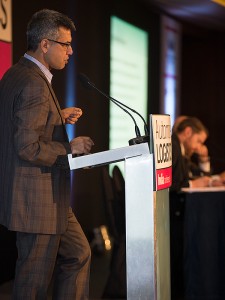
The ‘Make in India’ programme has also targeted incentives and encouragement for automotive growth and investment, including in the supply chain. Ford’s Amlan Bose said that Ford was working on improving its localisation of suppliers and expanding its capacity to promote and encourage ‘Make in India’ even during the recent industry downturn.
Logistics ambitions
Along with growth, logistics executives hope that the government will invest in infrastructure and cut through red tape, not least on policies such as the GST. And there were some signs of improvements ahead. According to Sanjay Bandopadhyaya, joint secretary, Ministry of Road Transport, a proposed safety bill would consolidate safety and driver registration details with a planning and oversight authority responsible for the efficiency of the transport and freight network, including multimodal and public transport (read more here).
There is also continued investment along a $16 billion dedicated freight corridor for rail freight, which is expected to increase capacity and service speeds significantly.
Speakers also showed how the industry is not only waiting for government reform and investment, but is preparing for acche din. With the planned opening of its second Indian assembly plant in January, in Sanand, Gujarat, Ford has overhauled its logistics network and outsourcing to a lead logistics provider concept. Carmakers such as Mahindra & Mahindra and Maruti Suzuki are also improving their inbound and outbound logistics network, from returnable packaging to better driver training and facilities.
Likewise, the Automotive Freight Transport Operator (AFTO) policy has allowed more advanced railway wagon design and services, which are currently offered to OEMs by APL Logistics Vascor Automotive and directly by Maruti Suzuki. Both are currently in the process of ramping up services (read more here).
Caution ahead, too
However, while the signs of recovery and ambitions are encouraging, it is not yet entirely clear whether the Indian economy is set to take off in full force, or whether the government could be credited yet with having the right policies. High interest rates and red tape remain, although the government has made moves to ease the process and costs of business in India.
The GST is still delayed, but it is now meant to be on a fast track, and could arrive by 2016. “I wouldn’t say it’s the wolf that is coming anymore,” said Verma. “GST looks more like it at least has its foot in the door.”
Other fronts were less encouraging. Delegates were disappointed to hear that the proposed road bill would not clarify the exact dimensions of vehicle carriers in India, which vary between the official length of 18.75 metres and those vehicles commonly used in the sector.
Many expressed anticipation for the next budget, which will be unveiled in February 2015.
Meanwhile, India faces plenty of risks and issues that cannot be resolved quickly or easily by the government. Luckily for some companies, these problems could also be opportunities to grow and improve logistics.

Nigel Harris said that there was more opportunity to localise tier two and tier three suppliers in India, particularly around electronic parts, but also tooling and equipment. ACMA’s Mehti also predicted that tier one suppliers would start to put more pressure on their own suppliers to localised in India.
Multimodal dreams to reality
The opportunity for rail is also clear, and an area where progress has begun to move from long-awaited plans to operation. While only 2-3% of automotive freight currently moves by rail, there are initiatives that should increase this level, including through the AFTO and the dedicated rail freight corridor (both of which pre-dated the current government). The latter will eventually cover India’s ‘golden quadrilateral’ between Delhi and Chennai on the north-south axis, and Mumbai and Kolkata on the east-west axis. According to HD Gujrati, director of the Dedicated Freight Corridor Corporation of India (DFDCIL), a publically owned division the railways, work has begun on the eastern corridor of the route between Ludhiana in the north to Kolkata in the east, and public works commissioning for the western corridor to Mumbai should begin over the next year (read more here).
These lines, which will be accessible to private and non-state operators, will be dedicated to cargo (compared to the existing network, in which passengers have priority). Trains will be capable of speeds twice as fast as normal rail freight in India, and wagons would be double stacked to seven metres on the western corridor, compared to 4.2 metres for most of the Indian Railways network. The trains would also be wider and longer than other freight trains. Unlike freight services on the general network, they would also have a timetable, which could make their use for manufacturing more relevant.
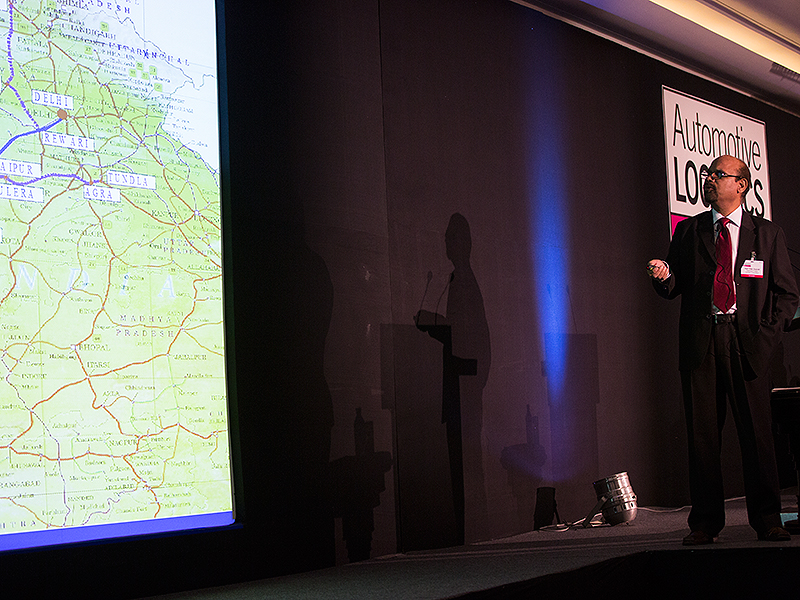
He anticipated both corridors to be full open by 2019, by which time the railways would also be building the route’s next phases. However, this date is behind the programme’s original timetable by several years.
Prem Verma, meanwhile, expressed hope that India would experience a “blue revolution” as short-sea shipping would be offered to move goods along the country’s long coastlines. However, Julian Bevis, a member of the infrastructure committee at the Federation of the Indian Chambers of Commerce and Industry, noted that India’s current cabotage and shipping framework do not allow for such services by global shipping lines.
Similarly, port regulations, and a lack of infrastructure, mean that material and goods that are transhipped into or out of India are usually done in Singapore or in Colombo, Sri Lanka. “It’s a waste,” said Bevis.
Many sides of hope and promise
These initiatives, ambitions and difficulties echoed in the 2014 conference’s theme of ‘Hope and Promise’. As with any Indian symbol, it was a theme with multiple meanings and interpretations. A number of speakers implicitly recognised the sense of longing that went along with all the high expectations.
“In India it feels as though lately we are surviving on hope and promise alone,” said Rajiv Bajaj.
He pointed out, for example, that if the automotive industry were to meet its target of growing revenue by five times, India would need to increase infrastructure investment by seven times, including for roads, railways, public transport and ports. However, investment has declined during the downturn, including foreign direct investment in infrastructure and public private partnerships – in part because of the country’s cumbersome tax and regulatory conditions.
“India needs to encourage more public private partnerships for logistics and infrastructure, but we score poorly in ‘ease of doing business’,” he said. “We need to be more friendly to PPP plans.”
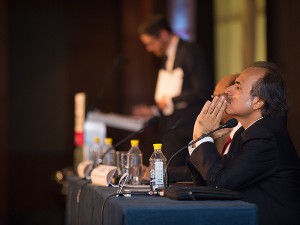
Others reflected on the need to move from hope deferred to promises fulfilled. “I smiled when I heard the theme, ‘Hope and Promise’,” said Nigel Harris from Ford India. “I would hope that we are about more than just hope or promise in India. Especially when talking about logistics, it needs to be about delivery as well.”
Perhaps few companies in India understand India’s joys and pains in as equal measure as Ford. The carmaker has invested heavily in the country, including the launch of its second integrated manufacturing plant next month in Sanand, in the western state of Gujarat, a $1 billion investment that will compliment its existing assembly and engine plant in Chennai in the south, and further the carmaker’s ambition to make India a hub for small car manufacturing.
In the past year, like other OEMs, Ford has struggled with declining domestic sales. The fall has been partly made up by exports, however the weakness in its capacity utilisation in Chennai is a risk ahead of the new plant. Harris admitted that the current scale for carmakers like Ford in India was still too low. “The domestic sales and exports from India are not enough to achieve economies of scale,” he said.
However, India has shown glimpses that it is about ‘more than hope’. The launch of the Ford Ecosport, which is now built in Chennai, has been a strong success, with sales and export volume above expectations. Sales were so strong, for example, that order banks for the vehicle in India were up to six months long earlier in 2014. The company has since largely been able to catch up suppliers and capacity, but Harris admitted that the company had lost some sales.
“We had allocated production capacity of 125,000 Ecosports in Chennai, of which 50,000 were designated for exports,” said Harris. “We couldn’t let down our export commitments, and when the domestic demand was stronger, we fell behind.”
Looking to supply chain optimisation
Despite its struggles, Harris confirmed Ford’s commitment to the Indian market and its potential to be a domestic and export “powerhouse”. The company expects the market to be between 6m-7m units by 2020. When Sanand reaches capacity, the carmaker will have installed production capacity of 440,000 vehicles in India, and it plans to export 50% of the vehicles that it builds there.

Employees from the logistics providers are embedded with Ford, and have full access to its freight budget, said Bose. Penske is also an LLP for Ford in both North and South America, while DHL carries out a similar role in Europe.
On the outbound side, meanwhile, Ford was the first carmaker to sign a letter of intent to use the services of APL Vascor’s new rail services, which started in November and are currently moving one rake every 12 days from Chennai to Delhi. Bose said that the carmaker intends to ramp up the service to other locations, as well as to use rail out of its new plant in Sanand.
“In the long run we want to go ‘all out’ with rail, including using it for inter-plant shipments of engines and transmissions, for example,” revealed Bose.
Ford is not the only carmaker who has been focusing strongly on efforts to improve its logistics, and looking to work more closely with logistics providers to achieve this. For inbound logistics, Mahindra & Mahindra has increased its use of returnable and reusable packaging, according to Milind Wadke, general manager of the company’s centre of excellence for packaging. The company is using more standard, returnable packaging, including reengineering and resizing boxes and pallets to improve pack density.
Wadke added that Mahindra & Mahindra has been exploring more outsourced models of its packaging ownership and management. Where possible standard parts and flows, it rents packaging from specialist providers and uses common packaging pools, which Wadke said helped to lower capital costs, remove hassles and maintenance costs. For larger pieces in which there are fewer standard packaging offers, such as body parts and stampings, the carmaker tended to use its own bespoke packaging.
Wadke pointed out that the industry still had more opportunities to consolidate its packaging standards. He pointed out that in a recent study, Mahindra found that there were still seven different footprints for expendable packaging, and 12 for returnable. “If the OEMs and suppliers could work together, we could reduce this number and establish more common standards,” he said.
Mohd Sharhid, divisional manager of Daimler India Commercial said that it is important for Indian OEMs to have efficient logistics processes, which is something Daimler has been working on across its plants. Around 70% of parts are delivered directly to the line, and travel less than 30 miles (50km) before consumption. The OEM has also focused on sharing packaging development for returnable packaging, and aligning part delivery concepts early. The standardisation of material handling processes has led to better handling and transportation efficiencies, and the supplier volume landscape is complimented by an efficient inbound logistics process with hub and spoke connectivity.
Sharhid said that further efficiencies can be achieved be meeting the next level of logistics challenges. These include the use of common packaging across the industry for better pooling and higher transport efficiencies; policies to support and service providers who can operate warehouses on wheels; unified tolls and check posts to simplify roads; and fleet upgrades with modern trucks to reduce carbon emissions.
Shailendra Singh, general manager of Maruti Suzuki India said it has also been working on its efficiency using a three point strategy. The OEM has been improving its level of sustainability in packaging, which used to be around 60% going in the bin, and storage space utilisation of less than 25%, with around 75% taken up by air. It has now improved its packing density, saving 75 trips a day, or 21,000 a year. The issue of packaging is more of a concern in India too than other countries. In Europe, the average rate of volume filled is 82%, but just 62% in India.
The OEM is also optimising its in-plant logistics and attempting to reduce the amount of electricity used. It has developed a series of pulley systems to minimise human effort, and reduce manual handling by 30%, while also working on ergonomically friendly racks and trolleys. Outside the plant, in response to demand fluctuation, Maruti Suzuki has been working to develop multimodal logistics, and now uses a 3PL to improve outbound logistics efficiency. The OEM was the first company to get an AFTO licence to run India’s first flexi-deck rakes.
Mayank Agarwal, head of corporate sourcing at Minda Corporation, an indigenous Indian supplier with 27 plants in the country and 5 overseas, said that supply chain optimisation had become “a mega buzzword across the company”. Minda has been working on consolidating common suppliers across its divisions to help improve economies of scale in its purchasing and logistics. The company has also been implementing crossdock and milkrun services to help improve its transport costs and reduce inventory levels.
“We have been running the milkruns ourselves, but our next step is to outsource this project to a logistics provider,” said Agarwal.
Rising rail and quality for outbound
There were also signs of improved operations for outbound logistics. PR Ramakrishnan, general manager of marketing support for Honda Cars India, said the Japanese carmaker is also using the APL Vascor service to move vehicles from its plant in Greater Noida, near New Delhi, to Chennai. He pointed to other efforts to improve human resources both within Honda as well as among the truck drivers serving the carmaker.
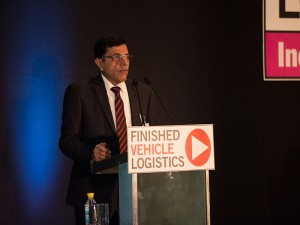
“We are going in for multimodal transport in a big way,” said Kapoor.
He added that the carmaker was looking to increase the use of tracking trucks and vehicles with GPS technology. The company has also introduced a series of voice commands in trucks to warn drivers about safety, speeding and loading information. The equipment is part of an ongoing driver training and awareness programme. Kapoor pointed to savings over the past three years that accounted for around Rs.80m ($1.28m) in lower damages and improved transport operations.
Car carrier confusion
The positive news on outbound was clouded in some ways by the continuing lack of clarity over car carrier lengths. India’s rules on the length of this equipment are confusing, with the official length at 18.75 metres, but with the common practice increasingly to use longer trucks, varying up to around 22.5 metres with different drawback varieties. The prevalence for the longer length now appears to be so widespread that one car carrier company admitted that it hardly sold any trailers for four years until it finally started building those that were technically illegal. “Now we have plenty of orders,” he said.
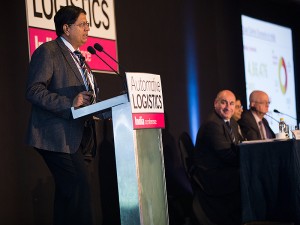
“With this new central authority coming in, one of these verticals will be looking at these issues very carefully. We will issues a draft of goods carriers; the regulation it will adapt will be European regulations, not more than that. The larger carriers should not be allowed,” he said.
(The EU actually uses a variety of standards up to as long as 25.5 metres in parts of northern Europe, but the common standard in some countries, as well as for crossing borders between member states, is 18.75 metres.)
Despite Bandopadhyaya’s warning, however, executives suggested that the industry would remain in limbo until the government issued a more direct decree on a standard and its enforcement. Kapoor said that the current legal length was far from clear, and that while Maruti would generally encourage the use of legal trucks, it was not always easy to enforce this. In some cases, it had to pay transporters the difference between using the longer and shorter standard, for example.8
Acche din, someday soon
Despite such issues, there were those who said that the Indian logistics industry is stronger and more efficient that it is sometimes presented in media or by OEMs. TCI’s Jasjit Sethi, for example, warned against the frequent comparisons of the cost of logistics as a percentage of GDP, which many experts suggest to be around 14% in India, or nearly double those of developed countries.
“If you compare with China, for example, experts estimate a similar or higher percentage of GDP, and yet it is often mentioned as being ahead of India [for logistics],” he said. “I don’t think that we should just throw around this number so casually.”
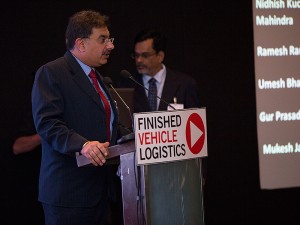
India’s infrastructure is and will likely remain a chronic issue, however. It is not altogether clear if public, private or a mix of funding will be enough to match growth or even alleviate current bottlenecks over the coming decades. However, the government has signalled that improving infrastructure is a priority. Rajiv Bajaj pointed out that the Indian Railways has been particularly ahead of the game in some respects by encouraging more foreign investment and private operation of services on its lines, including along the planned dedicated freight corridor.
“It would even seem that the new government wants to use the railways as a showcase for its ambitions since railways are something that touches every Indian, whether it is for freight or for passenger transport,” he said.
Clearly, India’s automotive logistics sector still has its hope and promise: the potential of a flourishing market, ambitions to improve operations, and the expectation that the country’s economic and regulatory framework will improve. That so many speakers emphasised hope even in uncertain times suggested how ready Indians are for change – and of how much hope and promise they put in Narendra Modi himself.
“You are all seeing the news and noise about making India an easier place to do business. That is clear across the [central] government, and also across the states. So, acche din anne wale hain,” said Bajaj. “A better day is coming.”
For videos of the main conference sessions, please click here.
Automotive Logistics India is part of a series of global conferences on the automotive logistics and supply chain industry. The next event in the series is Automotive Logistics Mexico, January 27-29th 2015 in Mexico City.
Automotive Logistics India 2015 will return next December.
Topics
- Africa
- africa
- Asia
- asia
- Asia Pacific
- Asia Pacific
- Central America
- Central America
- Europe
- europe
- features
- Finished vehicles
- Govt policy/regulation
- Inbound
- Integrated LSPs
- Intermodal
- Inventory management
- Lotus
- Middle East
- middle east
- north america
- North America
- OEMs
- Packaging
- Packaging
- Ports/terminals
- Rail
- Road
- SCM
- Shipping - vehicles
- south & central america
- south america
- South America
- Sustainability
- Tier suppliers
- UPS


























![Global[1]](https://d3n5uof8vony13.cloudfront.net/Pictures/web/a/d/s/global1_726550.svgz)









